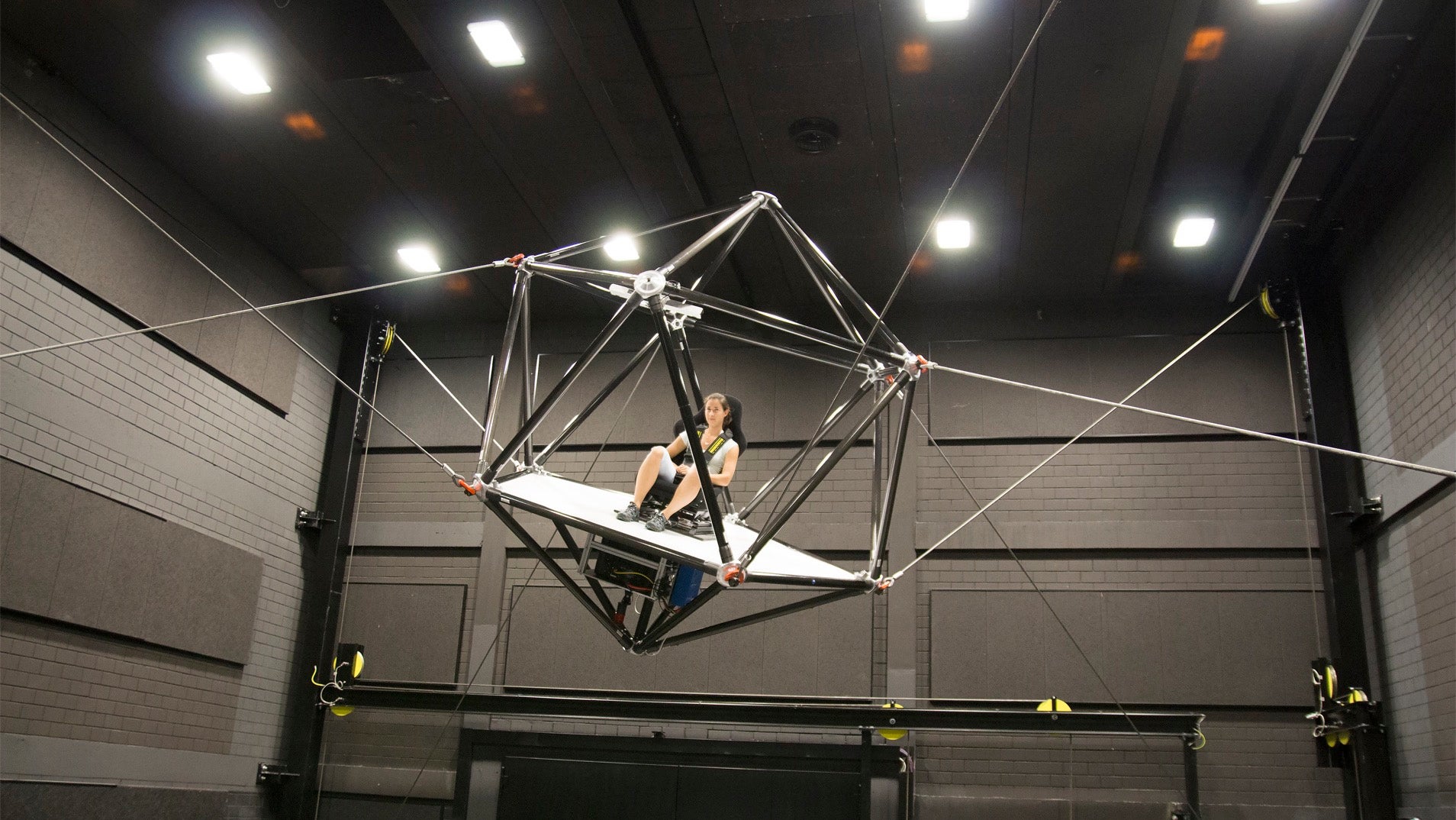Watch a video of this crazy device that makes virtual reality feel real
One of the biggest problems with forthcoming virtual reality systems, like Facebook’s Oculus Rift, is that they don’t really convince us we’re in an entirely new world. But the creators of a massive new structure in Germany may have just figured out how to make virtual reality feel more like actual reality.


One of the biggest problems with forthcoming virtual reality systems, like Facebook’s Oculus Rift, is that they don’t really convince us we’re in an entirely new world. But the creators of a massive new structure in Germany may have just figured out how to make virtual reality feel more like actual reality.
Seemingly taking cues from every Disney World ride ever, researchers at the Max Planck Institute in Tübingen have built a cage suspended in mid-air that mimics real-world forces, in VR environments.
The cage is suspended by a series of cables, which are controlled by robot-operated winches. The robots can reel in and out the cables, mapping real-word forces in real time with the virtual environment: in a VR racing simulation, you’d get the feeling of making a hard turn; in a VR flight simulation, your stomach would flip as the cage rises sharply in imitation of lift-off. The robots can make it feel like the person is falling, rising, twisting, turning, and every other sort of feeling you’d not likely feel if you were just standing in a room with a headset on.
“This simulator offers us entirely new possibilities for studying motion perception with possible applications in neurological research into balance disorders,” Professor Bülthoff, a researcher at the Institute, said in a release.
The consumer launch of the Oculus Rift set to take place in early 2016, and Facebook CEO Mark Zuckerberg actually thinks there’s going to be a point in the future where we’ll strap VR headsets to our faces in public. Whether that happens or not, it’s quite unlikely that many consumers will be transforming their living rooms to accommodate a winch system like the Institute’s.